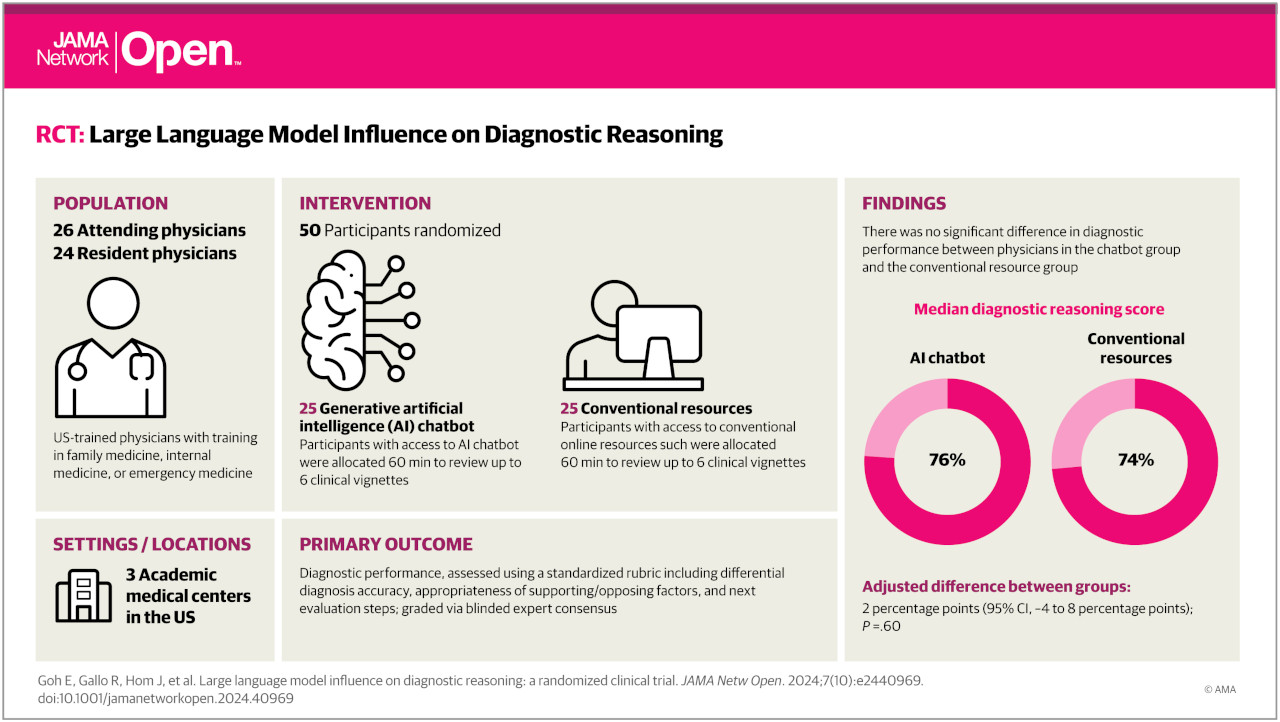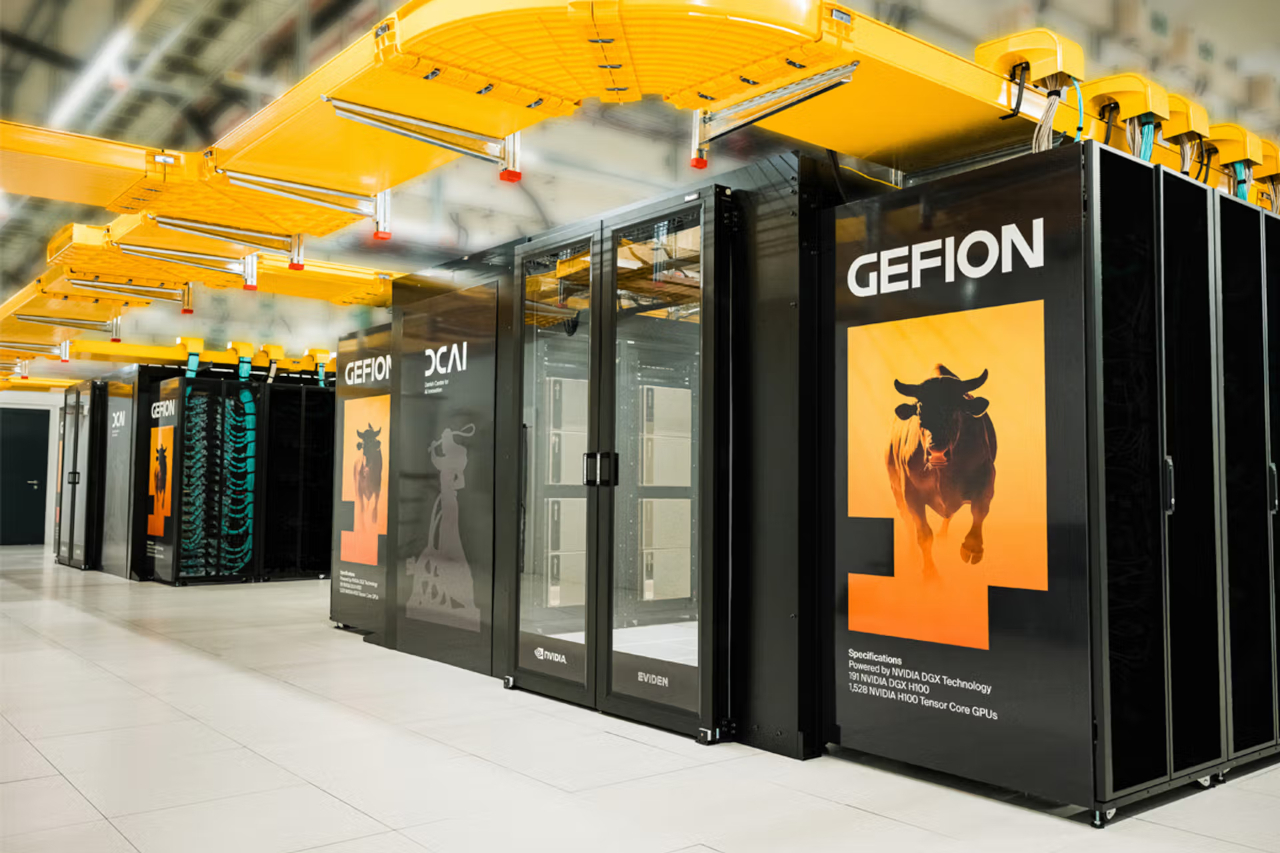

Abstract
A recent study published in JAMA Network Open examined whether AI chatbots, specifically large language models (LLMs) like ChatGPT-4, improve physicians' diagnostic reasoning. The randomized clinical trial found that while the LLM alone outperformed physicians in diagnostic accuracy, providing physicians with access to the AI tool did not significantly enhance their performance compared to conventional resources. The findings highlight the potential of AI in diagnostics but underscore the need for better integration, clinician training, and further research to optimize AI's role in medical decision-making.
Key Points
Read more: Study Finds AI Chatbots Do Not Improve Physicians’ Diagnostic Reasoning

Abstract
Novo Nordisk is revolutionizing the pharmaceutical industry by integrating artificial intelligence (AI) across its value chain. From drug discovery and clinical trial optimization to regulatory reporting, AI is enabling faster, more efficient, and innovative approaches to tackling chronic diseases such as diabetes and cardiovascular conditions. Collaborating with Microsoft, Novo Nordisk has developed a cutting-edge AI platform that unifies data and tools, empowering researchers to uncover new insights and enhance patient outcomes. This commitment to AI-driven innovation positions Novo Nordisk at the forefront of healthcare advancements, with promising developments in personalized medicine, predictive modeling, and reduced time-to-market for life-saving therapies.
Key Points
AI in Healthcare: Novo Nordisk uses AI to analyze complex healthcare data, improving efficiency and accelerating discoveries.
Innovations: Predictive models, centralized data platforms, and AI-powered drug discovery enhance precision and speed.
Collaboration: Partnering with Microsoft has enabled scalable, adaptive AI tools.
Patient Benefits: Personalized treatments and faster access to therapies.
Future Focus: Exploring quantum computing and digital twins to drive innovation further.
Read more: How Novo Nordisk is Utilizing AI for Drug Discovery

Abstract
Denmark's AI supercomputer, Gefion, marks a pivotal moment in artificial intelligence and research innovation. Built on NVIDIA’s DGX SuperPOD platform, Gefion is designed to tackle critical global challenges across various sectors, including healthcare, climate science, and quantum computing. The supercomputer combines unparalleled computational power with a commitment to sustainability, hosted in a data center powered by 100% renewable energy. As Denmark’s first sovereign AI infrastructure, Gefion preserves cultural and linguistic nuances in AI models, empowering local and global research communities. Its launch underscores the necessity for nations to adopt transformative technologies to remain competitive in the rapidly evolving AI landscape.
Key Points
Read more: Denmark’s Gefion AI Supercomputer Revolutionizes AI-driven Research
%%sql
-- Find the total count of duplicate rows in the CLARITY_DATA table
SELECT SUM(duplicate_count - 1) AS total_duplicates
FROM (
SELECT COUNT(*) AS duplicate_count
FROM CLARITY_DATA
GROUP BY Date, Time, DateTime, Value, Treatment, Source
HAVING COUNT(*) > 1
) as duplicates;Abstract
A comprehensive 4-part series on analyzing continuous glucose monitor (CGM) data using Python, SQLite, and Tableau. Each part focuses on a specific step of the process, from building a clean dataset to creating interactive visualizations. Designed to be accessible for readers of all expertise levels, the series provides practical guidance for managing and interpreting CGM data. The post also links to each detailed article, providing a clear pathway for readers to follow the project step by step.
Key Points
Purpose of the Series: Guide readers through the process of analyzing CGM data, demonstrating practical applications of Python, SQLite, and Tableau.
Read more: Working with CGM Data: Python, SQLite, and Tableau in a 4-Part Series
Page 3 of 9